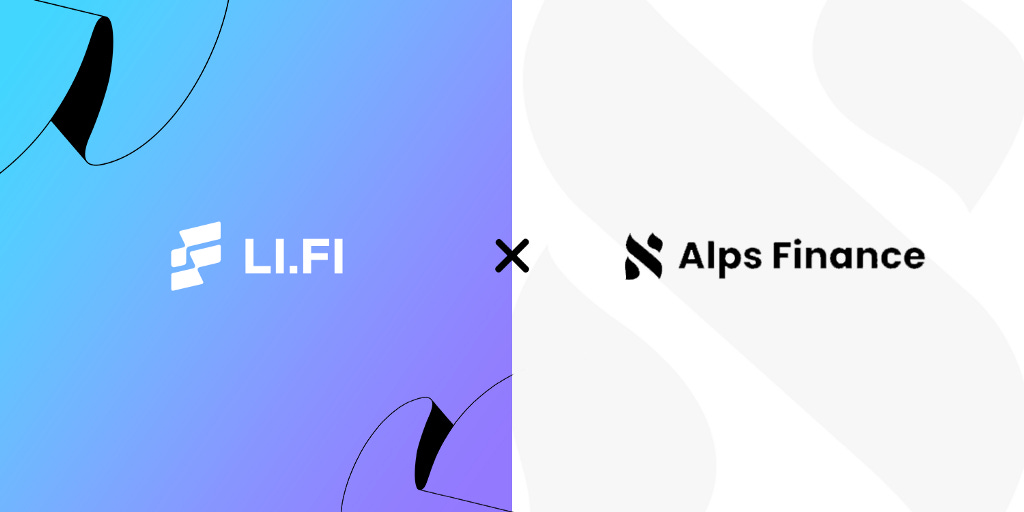Alps Finance Integrates LI.FI’s SDK
TL;DR — Alps Finance implemented LI.FI’s Software Development Kit (SDK)!
We’re proud to announce that Alps Finance, a social DeFi investing platform, has integrated LI.FI’s SDK into its dApp. Alps users can now enjoy any-2-any swaps across every chain supported by LI.FI with the click of a single button — without having to leave the Alps Finance dApp.
What is Alps Finance?
Established in April of 2022, Alps Finance is just beginning its journey. It is a “social” DeFi platform that believes the future is cross-chain and that navigating the blockchain space should be simple for users. Their thesis, found in a recently published whitepaper, is to the point: Alps Finance “will help users to learn, invest, and manage all their crypto assets easily.”
Alps Finance, which is currently in MVP (minimum-viable-product) staging, plans to go live with five main features:
Web3 Email Login — minimizes popups and creates a quicker login flow for users.
NFT-Based Social Media — messaging and posting will allow investors to share their theses + experiences utilizing certain NFT collections.
DAO Investment Fund — the creation of DAOs in a few button clicks unlocks the potential for collaboration between retail traders at an unprecedented level.
Automatic Derivatives Market Maker — crypto derivatives market gives investors nearly infinite diversity of tokens to purchase.
And, most importantly, a:
5. Cross-Chain DeFi Aggregator — brings together bridges, DEXs, and EVM compatible chains into a single user interface, reducing the knowledge required to utilize DeFi tools.
What is LI.FI’s SDK?
LI.FI is a cross-chain bridge aggregation protocol that supports any-2-any swaps by aggregating bridges and connecting them to DEXs and DEX aggregators. As of writing time, LI.FI supports 13 DEXs, 12 chains, and 9 bridges (with more to come soon) — all in a single user interface.
In a nutshell, LI.FI is like 1inch & Paraswap for bridges; we choose the best bridge to move funds from one chain to another. Furthermore, since many bridges support a limited amount of tokens, we have DEXs on both sides of the bridges to swap before and after the bridge, thus facilitating any-2-any swaps across chains.
At its core, LI.FI can route any asset on any chain to the desired asset on the desired chain, thus providing a remarkable UX to users.
Notably, this ability to route assets across chains in one click can be built into other DeFi protocols, such as Alps Finance, via our software development kit (SDK). This package permits access to LI.FI API, which finds the best cross-chain routes on different bridges and exchanges. The routes can then be executed via the SDK.
It is this product, the LI.FI SDK, that Alps Finance has chosen as the cross-chain aggregation tool.
LI.FI x Alps Finance
The LI.FI SDK has been integrated by Alps Finance in its MVP and is now available to use. You can check it out using this link and logging in.
At LI.FI, our goal is to allow users to move across chains without having to go through the hassle of choosing the best bridge. To do so, we aggregate the most important bridges and connect them to DEXs and DEX aggregators on each chain to facilitate cross-chain any-2-any swaps.
We are thrilled that Alps Finance chose LI.FI as its cross-chain aggregation solution. By integrating our SDK, Alps Finance can enable cross-chain any-2-any swaps directly inside their dApp — which, as the crypto ecosystem continues to expand to more chains, will be more and more important going forward.
Creating a seamless cross-chain user experience is key to our ethos at LI.FI and we are excited to see Alps Finance join the LI.FI family!
We are excited to see who will integrate our SDK or widget next.
To learn more about Alps Finance, check out their…
Get Started With LI.FI Today
For more information about the LI.FI protocol,
Head to our link portal at links.li.fi
Read our SDK ‘quick start’ at docs.li.fi
Join the official Discord server
Follow our Telegram Newsletter
or try our any-2-any swaps NOW at LI.FI
Alps Finance Integrates LI.FI’s SDK was originally published in LI.FI Blog on Medium, where people are continuing the conversation by highlighting and responding to this story.







